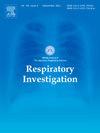Clinical characteristics of drug-induced interstitial pneumonia in Japan
IF 2.4
Q2 RESPIRATORY SYSTEM
引用次数: 0
Abstract
Background
Japan has a higher incidence of drug-induced interstitial pneumonia (IP) than other countries. Understanding the clinical characteristics of drug-induced IP in Japan will facilitate accurate diagnosis of the disease. The aim of this study was to analyze and report the clinical characteristics of drug-induced IP in Japan.
Methods
We analyzed the characteristics of drug-induced IP diagnosed between 2009 and 2022 in Japan. Case data were collated with the cooperation of pharmaceutical companies, as requested by the Ministry of Health, Labour and Welfare.
Results
We identified 285 patients with drug-induced IP diagnosed in medical institutions. The most common causative drugs identified were antineoplastic agents (56.1 %). Common subjective symptoms included dyspnea (158 patients [55.4 %]), cough (132 patients [46.3 %]), and fever (115 patients [40.4 %]). In addition, 177 patients (73.1 % of those measured) showed elevated serum KL-6, SP-D, or SP-A levels. Approximately 60 % of the patients developed IP within 90 days from the initiation of drug therapy, whereas 15 % developed the disease after >1 year. Regarding imaging findings, 249 patients (87.4 %) showed bilateral shadows. Corticosteroid therapy was administered to 222 patients (77.9 %). The treatment outcomes of drug-induced IP in Japan were favorable, with improvement observed in 273 patients (95.8 %).
Conclusions
Dyspnea, cough, and fever after administration of a drug; elevated serum KL-6, SP-D, and SP-A levels; and bilateral shadows were identified as clinical features of drug-induced IP in Japan. Drug-induced IP should be considered a differential diagnosis even if the patient started using the causative drug long ago.
日本药物性间质性肺炎的临床特点
日本药物性间质性肺炎(IP)的发病率高于其他国家。了解日本药物性IP的临床特点有助于对该病的准确诊断。本研究的目的是分析和报道日本药物性IP的临床特点。方法分析日本2009 ~ 2022年诊断的药物性IP的特点。根据厚生劳动省的要求,在制药公司的合作下对病例数据进行了整理。结果285例经医疗机构诊断为药物性IP的患者。最常见的致病药物是抗肿瘤药物(56.1%)。常见的主观症状包括呼吸困难(158例[55.4%])、咳嗽(132例[46.3%])和发热(115例[40.4%])。此外,177例患者(73.1%)显示血清KL-6、SP-D或SP-A水平升高。大约60%的患者在药物治疗开始后90天内发展为IP,而15%的患者在1年后发展为IP。影像学表现249例(87.4%)出现双侧阴影。222例患者(77.9%)接受皮质类固醇治疗。在日本,药物性IP的治疗结果是良好的,273例患者(95.8%)观察到改善。结论用药后出现呼吸困难、咳嗽、发热;血清KL-6、SP-D和SP-A水平升高;在日本,双侧阴影被确定为药物性IP的临床特征。即使患者很久以前就开始使用致病性药物,药物性IP也应被视为鉴别诊断。
本文章由计算机程序翻译,如有差异,请以英文原文为准。
求助全文
约1分钟内获得全文
求助全文

 求助内容:
求助内容: 应助结果提醒方式:
应助结果提醒方式:


